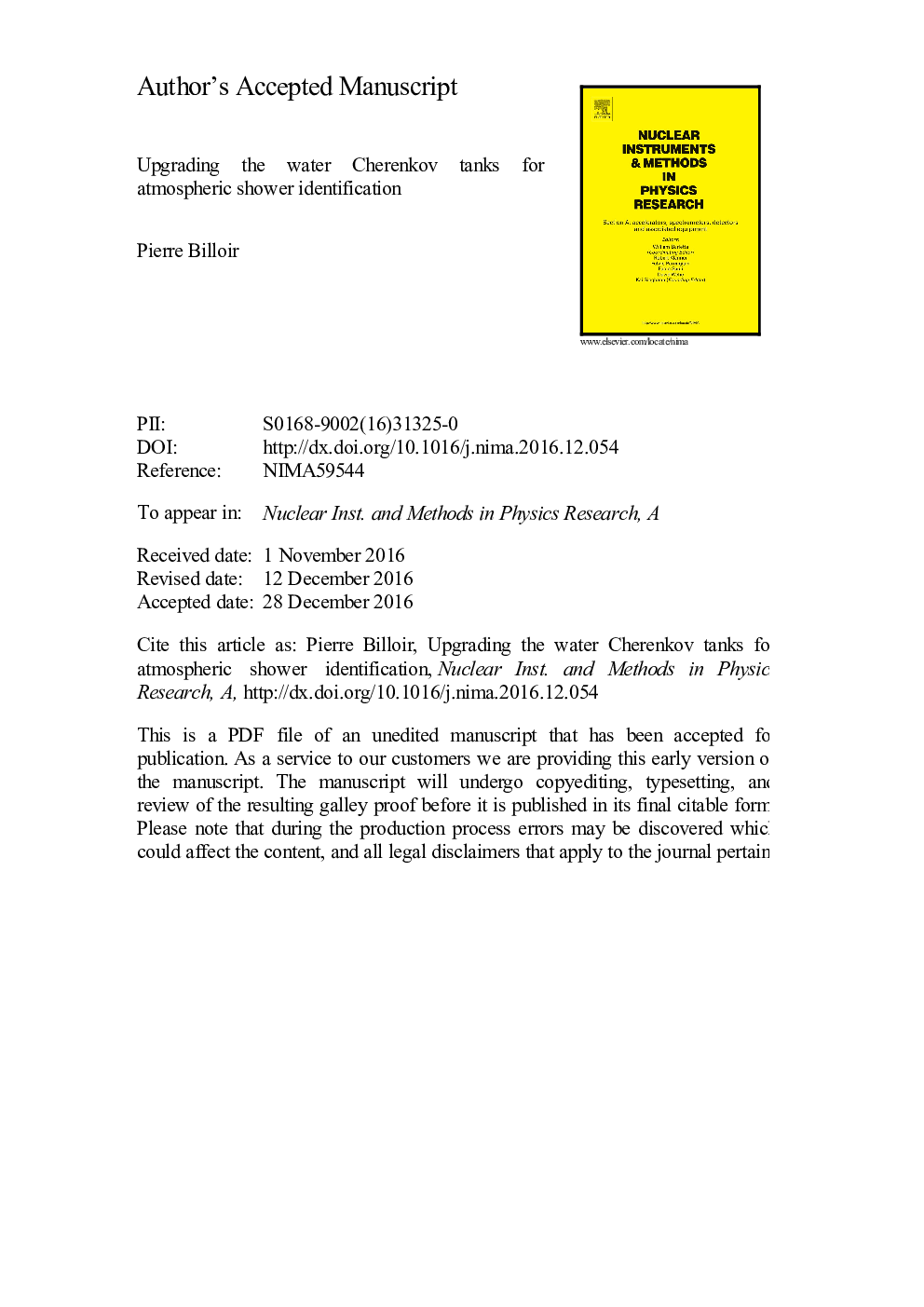| Article ID | Journal | Published Year | Pages | File Type |
|---|---|---|---|---|
| 8167566 | Nuclear Instruments and Methods in Physics Research Section A: Accelerators, Spectrometers, Detectors and Associated Equipment | 2017 | 5 Pages |
Abstract
The nature and the sources of the cosmic rays of ultra-high energy are not yet elucidated. The cutoff of the spectrum around 50Â EeV is now clearly established, but its interpretation is still ambiguous: it could be due to the so-called GZK effect on a flux dominated by protons, or by an upper bound on the acceleration in the sources, or a combined scenario. To answer these questions the identification of the nature of the primaries is crucial. Present ground based detectors, especially water Cherenkov tanks, provide some indicators, in complement to the depth of maximum directly measured by fluorescence telescopes; but these indicators rely on models of the hadronic interactions at ultra-high energy, which cannot be observed in present colliders. One key feature to set more constraints on the development of atmospheric showers is a separate measurement of their electromagnetic and muonic components. Water Cherenkov tanks are sensitive to both, but cannot disentangle them in a clean and model-independent way. We present different options that have been studied to upgrade water Cherenkov tanks, either by modifying their internal structure, or by adding above of below the tank another type of detector, with a different relative sensitivity to muons and photons/electrons.
Keywords
Related Topics
Physical Sciences and Engineering
Physics and Astronomy
Instrumentation
Authors
Pierre Billoir,
